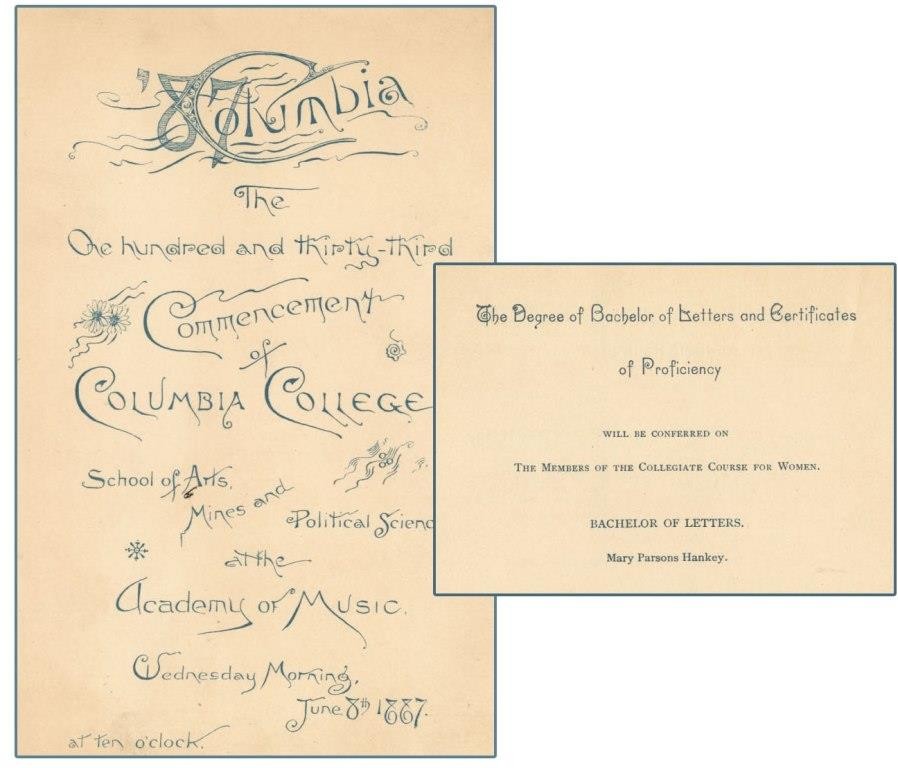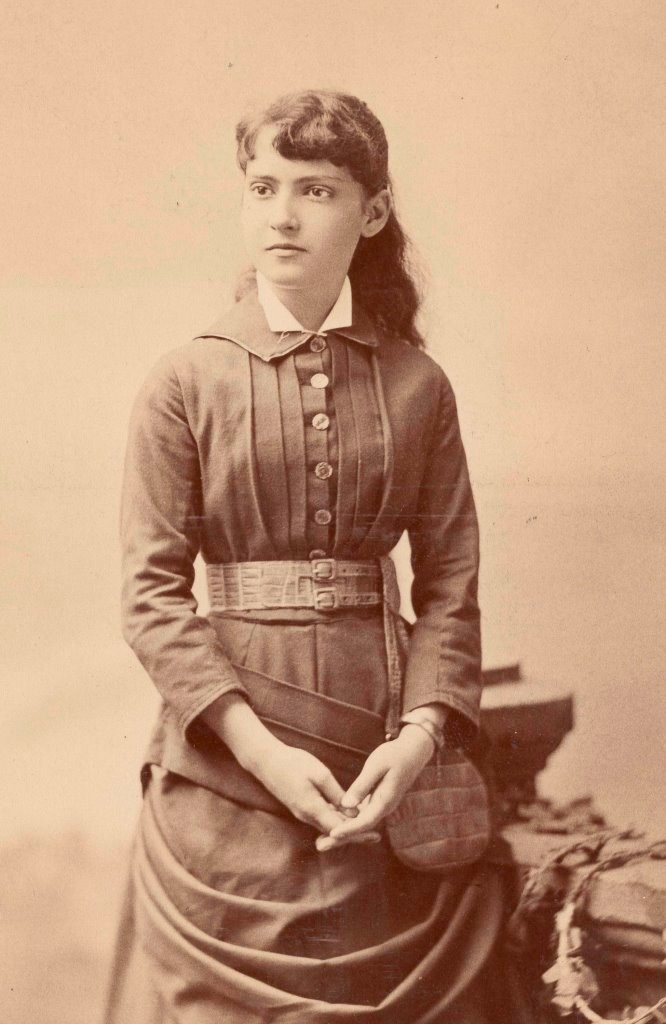Coeducation at Columbia
The Collegiate Course for Women
Reverend Morgan Dix led Columbia’s Board of Trustees to reject coeducation at the College. But Dix and the Board needed to respond to the negative reactions of New York’s press and the continued efforts of Lillie Devereux Blake and the Association for Promoting the Higher Education of Women in New York. In the spring of 1883, Dix and the Board attempted a compromise.
As he made clear in his Lenten Sermons, Dix objected to the concept of educating women in general, fearing the far-reaching effects it would have on traditional families. By contrast, most board members, along with the majority of the student body, disapproved of educating men and women together, not the instruction of women per se. To illustrate their liberality on this point, the Board set out to create Columbia’s “Collegiate Course for Women.” Women who applied to Columbia and were accepted into the Collegiate Course could take the same courses as College men, but could not attend the lectures with men. The Board of Trustees spent the spring and early summer of 1883 developing the Collegiate Course, and officially adopted the measure on July 9, 1883. [1]
- Overview
- The Struggle Begins
- Collegiate Course for Women
- Establishing Barnard
- Coeducation in Graduate Schools
- Coed at Last
- Bibliography
By 1884, six women had passed the entrance exam and enrolled in the Collegiate Course. In 1887, Mary Parsons Hankey became the first woman to receive her undergraduate degree from Columbia College.
Almost immediately, however, the women enrolled in the Collegiate Course for Women felt all the disadvantage of the situation. When possible, those courses were taught for women at an off-campus site; more often than not, though, alternate lectures were not offered, and students enrolled in the Collegiate Course simply read the textbook as best they could. When the semester neared its end, female students sat for the same final examinations as men – administered off campus, of course – and found that much of the content of the exams pertained to the lectures from which they were barred. Many women, moreover, found Columbia a thoroughly unwelcoming environment; most students and faculty made it very clear that women were not wanted on campus. [2]
As such, the program experienced little success and limited growth. During its six-year run, the Collegiate Course for Women enrolled a total of ninety-nine women. Columbia awarded only eight degrees to Collegiate Course students; of those, six received their Bachelors degree. [3]
One early Collegiate Course student, Annie Nathan Meyer, withdrew from the program in frustration after one year, as many of the students did, and married shortly after. Meyer, however, remained an active and vocal critic of the program, appealing to the University to improve the College’s educational opportunities for women. Meyer wrote prolifically in newspapers and periodicals about the limitations of the Collegiate Course and the need for a replacement program. In a January 1888 letter to the Nation, Meyer noted sardonically that the Collegiate Course was equal in all ways to College men’s curriculum “in all respects except the important ones of attending lectures and working in the laboratories. Is it to be wondered at that only two or three essayed to gain a degree of B.A. or B.L. under such conditions?” Meyer wanted to make clear that the low number of Collegiate Course graduates resulted from the limits of Columbia’s program, not any sort of deficiency of the female brain. [4]
In early 1888, shortly after the Nation published her article, Meyer lobbied the Board of Trustees to replace the Collegiate Course with a separate women’s college. She and the other advocates of women’s education were willing to compromise on the issue of coeducation in order to procure better educational opportunities for women. President Barnard was less willing to bend on the coeducational issue, and lent no support to the ensuing movement to establish a separate female college affiliated with Columbia. [5]
[1] Robert McCaughey, Stand Columbia: A History of Columbia University in the City of New York, 1754-2004. (New York: Columbia University Press, 2003), 167-168; Rosalind Rosenberg, Changing the Subject: How the Women of Columbia Shaped the Way We Think About Sex and Politics (New York: Columbia University Press, 2004), 42-44; Collegiate Course for Women, Historical Subject Files, University Archives, Rare Book & Manuscript Library, Columbia University in the City of New York.
[2] Collegiate Course for Women, Historical Subject Files; McCaughey, Stand, Columbia, 167-168; Annie Nathan Meyer, Barnard Beginnings (New York: Houghton Mifflin, 1935).
[3] McCaughey, Stand, Columbia, 167.
[4] See Meyer, Barnard Beginnings, Appendix C, for a copy of Meyer’s Nation article.
[5] McCaughey, Stand, Columbia, 168; Rosenberg, Changing the Subject, 49-51.

